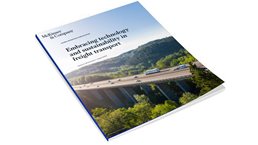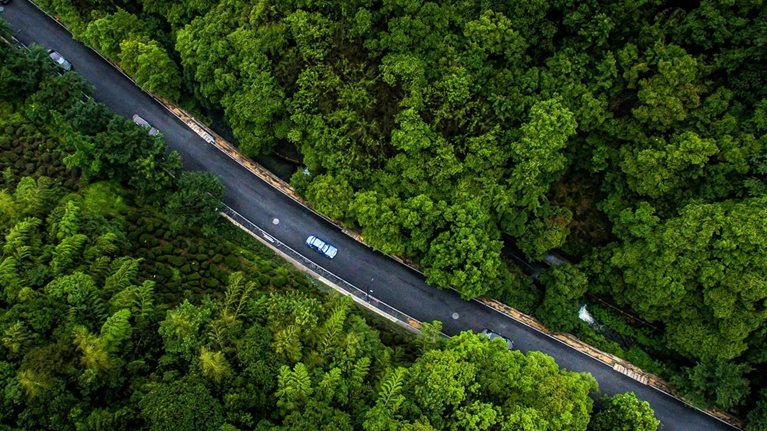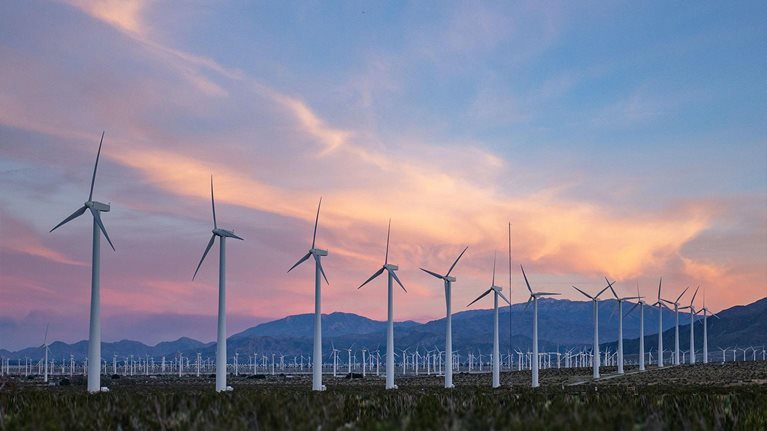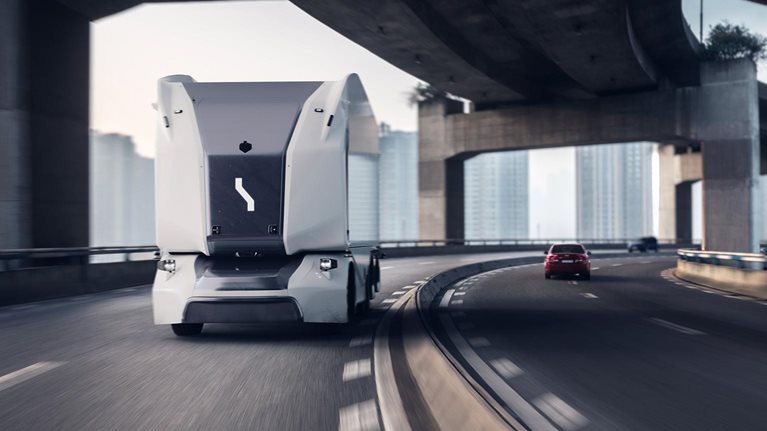In the months following the outbreak of COVID-19, delivery via road transport faced a number of pressing challenges, including increased safety precautions, urgent timelines, and shifting consumer preferences and expectations. Today, after more than two years of COVID-19 lockdowns, the logistics industry is navigating a series of new challenges regarding the need to decarbonize. Doing so entails addressing ambitious climate targets aimed at lowering greenhouse-gas emissions, which have led to changing regulations and fuel taxes, as well as increased electrification of fleets and increased demand for sources of clean energy.
McKinsey’s Melissa Yeo recently spoke with Christoph Hempsch, head of sustainability for Deutsche Post DHL’s German Post and Parcel, about how the last mile of delivery transport is evolving to meet the challenges posed by the COVID-19 pandemic, including the boost in e-commerce and disruptions to the supply chain.
Melissa Yeo: Pandemic-induced lockdowns saw a huge rise in e-commerce volumes. What were some of DHL’s biggest challenges during this time, and which steps were most critical in addressing them? What changes do you plan to retain after the pandemic wanes?
Christoph Hempsch: The most important thing was to keep our staff members safe, so we invested a lot of time and money into contact-free processes, not only for customers but also inside our network. Wherever possible, we tried to reduce the risk of two employees actually meeting in person. I’m thankful that during that time, we didn’t have a single sorting center that closed due to a COVID-19-related incident.
That said, some of our e-commerce customers had troubles with their supply chains because at any point in time there were issues in Asia with production in the ports and with logistics, which meant more volatility in volumes. On one hand, the demand from the recipient side was increasing, and on the other hand, our e-commerce customers didn’t know when they could ship out.
We are now more prepared for another pandemic wave or comparable situation with respect to how we treat our operational processes to keep our employees safe, as well as how to react to volatile volumes.
Melissa Yeo: How will infrastructure change in the next five to ten years to accommodate innovations in last-mile delivery? What are some examples of new assets—or existing assets—that will be repurposed for sustainability?
Christoph Hempsch: Sorting capacity and infrastructure will be critical because they cannot be replaced by other processes, and the capacities of the last mile will need to increase.
We will likely see a rise in sites located in city centers—or close to city centers—because the more central the delivery sites are, the fewer delivery routes you actually need. In addition, there will be more opportunities to use smaller delivery vehicles, such as cargo bikes. If the delivery sites are outside the city center, then cargo bikes aren’t an option. We are heavily investing in electrifying our fleet, especially for the last mile. In Germany, we run 20,000 electric vehicles [EVs] every day—out of 60,000 total vehicles—to deliver parcels and letters. The fleet of delivery bicycles has been transformed to a fleet of 19,000 e-bikes and e-trikes. Delivery sites will also become greener. This year, we are investing €600 million in EVs and carbon-neutral delivery sites, which leverage and store solar power and use heat pumps to achieve fossil-free heating.
Last but not least, we have a dense network of more than 9,000 parcel lockers. Partly driven by COVID-19, people are getting used to click-and-collect solutions that don’t require physical contact. The parcel lockers are available 24/7 and are normally close to where people live, ideally on the way to or from work. They’re convenient, and they’re good for the environment. They also make our deliveries more efficient; the more time a delivery driver spends actually delivering or handing over parcels and letters, the better.

Voices on Infrastructure: Embracing technology & sustainability in freight transport
Melissa Yeo: Advanced analytics can help optimize routes and understand customer behavior for greener and more effective fulfillment. As technologies get more advanced, what else could analytics achieve? What are other emerging or nascent technologies that could play promising roles?
Christoph Hempsch: The first and foremost example is forecasting and demand planning. With increasing volatility and volumes, it’s more important than ever to have a good idea of what volume will arrive, on what day, at what place, and at what time. From there, we can plan the sorting capacities, vehicles, and delivery capacities accordingly.
Although it’s relatively easy to create a demand forecast for the network, it can be a challenge to break it down to sites, shifts, and days. This means breaking down the volume and the structural data of delivery districts and planning how many delivery districts are needed on specific days, as well as preparing to change the setup of delivery districts if the volume changes.
We now have a system for real-time tracking, which is based on a route-planning algorithm. This is good for convenience because the better sense you have of when a parcel will arrive, the better you can plan your day and increase the chances of a successful delivery.
Recipient services1 also help save time and effort. We can tell the customer that a shipment is on its way, and then the recipient can choose a safe place to receive that shipment. For example, if you live in the countryside and you’re not at home but you have a garage, or even a preferred neighbor, you can communicate this with the delivery driver through an app.
Melissa Yeo: What is the biggest source of emissions in the last-mile delivery process? What is the biggest hurdle to abatement?
Christoph Hempsch: The biggest challenge is decarbonizing road transportation, and not just for us but for the entire logistics industry. We are probably a couple of years behind passenger EVs, but the technologies are there; it’s just a question of industrializing. Electric trucks are also going to be much more reliable than the first EVs were because the OEMs and truck manufacturers now have more than a decade of experience with EVs.
The first thing we try to do is move as much volume as we can from road to rail on our parcel network, which is currently about 6 percent. It might sound like a small number, but that’s more than a hundred million parcels every year—a hundred million parcels that used to travel by diesel truck.
The second thing that we started doing is introducing gas trucks—heavy-duty compressed-natural-gas [CNG] trucks—but the key issue is, again, the infrastructure. There are very, very few gas stations in Germany where you can fill up a gas truck, so we started building our own gas stations at selected parcel-sorting centers. That said, in ten years we will hopefully only buy electric—either battery electric or hydrogen electric trucks—but so far, it’s been difficult to make this leap.
In the Netherlands, Scandinavia, and the United Kingdom, you can buy hydrotreated vegetable oil [HVO] and use it in your existing vehicles, and that’s a quick way to decarbonize your fleet. In Germany, however, HVO is not allowed to be sold, and synthetic biofuels are not available.
Melissa Yeo: How do you measure your sustainability performance, and what other goals lie ahead between now and 2030?
Christoph Hempsch: We have made a commitment to be net-CO2 neutral by 2050—in line with the Paris Agreement to limit global warming to 2 degrees Celsius. There is also the Science Based Targets initiative,2 which is a nongovernmental organization [NGO] that validates our targets and our activities. As a group, we have an intermediate target for 2030 not to exceed 29 million tons3 of CO2, a number derived from our emissions from a few years ago.
Melissa Yeo: What actions are required by various stakeholders—such as governments, customers, retail partners, and delivery companies—to realize their targets?
Christoph Hempsch: We are already seeing a push in regulation. In many industries, we’re seeing carbon pricing and trading mechanisms. For example, in Germany there is a CO2 tax for fuels, which makes fossil fuels more expensive, and that’s of course driving the change to sustainable vehicles. Furthermore, if Europe prohibits the sale of combustion engines after 2035, that would be a major change. In many cases, however, the necessary changes are faced by incentivization—for example, by subsidies for buying green vehicles or free parking for EVs in city centers.
At the same time, I don’t know if it takes more regulation or more commitments. Most of the countries in the world agree that global warming that exceeds 2 degrees will endanger our planet. Many companies and organizations have agreed with that as well and subsequently made their own targets, but now they’re expected to act on those targets. If you visit the web page of any large retailer, for example, they will probably feature an announcement that they will be carbon neutral by 2050 or even earlier. But are they choosing their partners to achieve that goal? Are they willing to pay for green solutions to achieve that goal? Or are they only saying that because it’s 30 years from now?
From a practical standpoint, every customer has an important role in making sustainability a primary criterion when they select their partners and subcontractors. That will have a huge impact on sustainability. That’s going to change the whole industry.
This article is part of Global Infrastructure Initiative’s Voices on Infrastructure.


